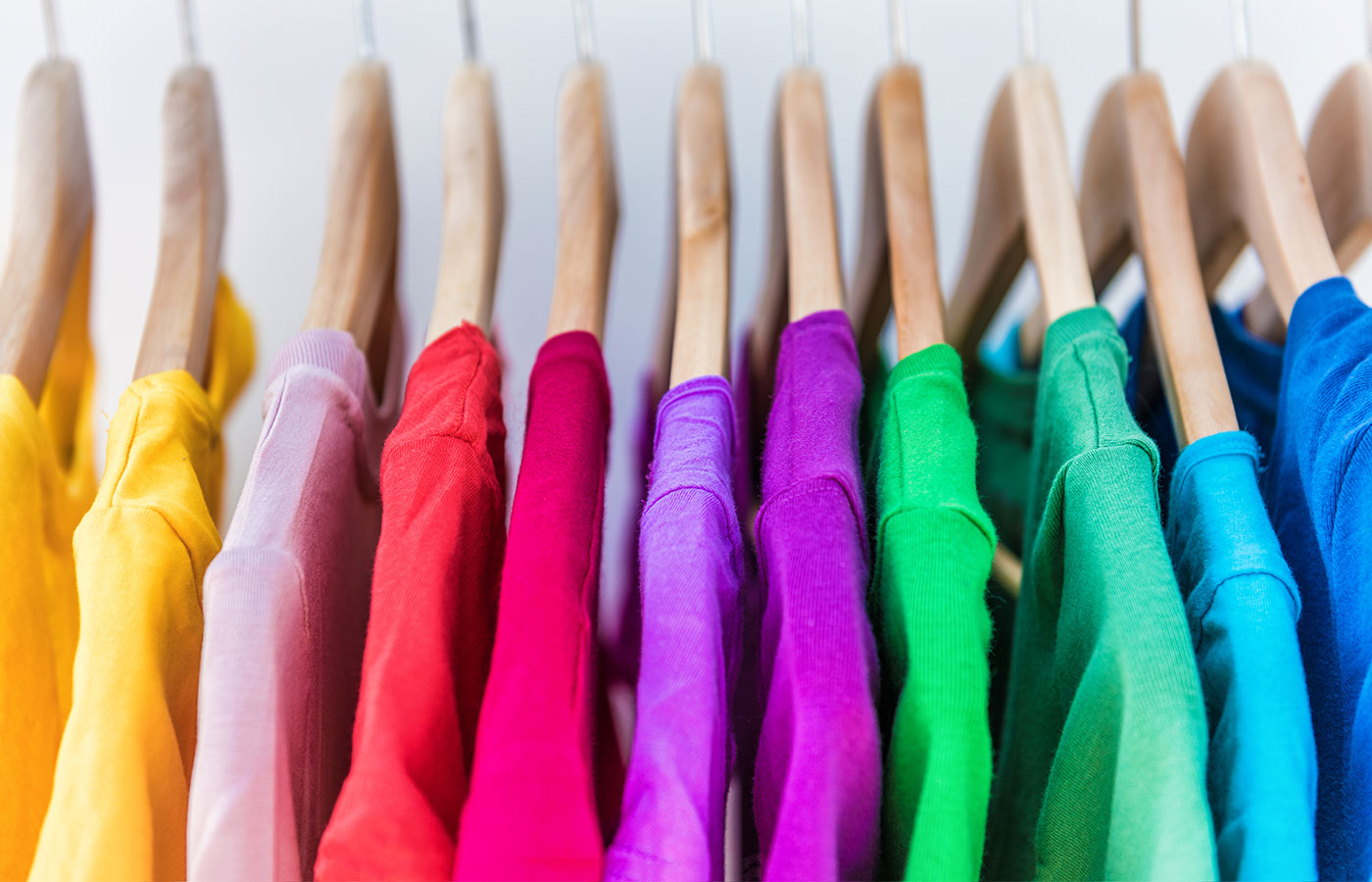Common Fabric Types Used in Branded Clothing and What They Mean
Common Fabric Types Used in Branded Clothing and What They Mean
Blog Article
Comprehending Clothing: The Relevance of Material Selections in Your Closet
The option of material in apparel plays a critical function in both appearances and capability. Various materials offer differing degrees of comfort, breathability, and sturdiness, straight influencing the wearer's experience. Understanding these nuances can boost one's wardrobe significantly. Yet, several forget how these options can impact not just individual style, however likewise sustainability. What fabric choices could redefine your wardrobe and straighten it with both design and responsibility?
The Function of Fabric in Fashion and Capability

Common Textile Kinds and Their Qualities
When selecting garments, recognizing the qualities of usual fabric kinds is essential for making notified choices. Cotton, a widely-used natural fiber, is known for its softness, adaptability, and breathability, making it appropriate for sportswear and day-to-day garments. Bed linen, another all-natural alternative, flaunts outstanding moisture-wicking homes and a distinct appearance, perfect for warm climates.Wool, typically favored for its warmth and durability, varies in fineness; merino woollen is soft versus the skin, while coarser types are used for outerwear. Artificial fabrics like polyester and nylon offer resilience and resistance to creases, making them prominent for activewear and travel garments. Blends, which combine synthetic and all-natural fibers, can improve capability while preserving convenience. By identifying these material qualities, individuals can select apparel that lines up with their way of life and visual choices.
Breathability and Comfort: Choosing the Right Fabrics for Various Environments
Selecting the best textiles for numerous environments can considerably improve comfort and total wearability. Breathable products are crucial in hot environments, as they enable air flow and dampness evaporation. Fabrics such as cotton, bed linen, and moisture-wicking synthetics successfully draw sweat away from the body, maintaining the wearer cool and dry. Conversely, in chillier climates, thicker materials like wool or fleece supply insulation while retaining breathability, making sure heat without overheating.Additionally, the selection of textile weight plays an essential role; light-weight materials are more effective for summer, whereas much heavier choices are fit for winter months wear. Comprehending the special homes of each fabric enables individuals to clothe suitably for differing climate condition. Ultimately, picking breathable and comfortable textiles tailored to details environments can considerably improve daily convenience and enhance the total experience of wearing clothing.
Durability and Care: Exactly How Material Affects Long Life of Your Wardrobe
Choosing the appropriate materials can substantially affect the resilience and care needs of a wardrobe. Fabrics such as cotton and polyester are known for their resilience and ease of upkeep, making them ideal for daily wear. In comparison, fragile products like silk and lace require even more careful handling and specialized cleansing techniques, which can enhance the moment and initiative required for care. Branded Clothing.Durability is also influenced by the fabric's weave and finish; tightly woven textiles often tend to stand up to wear and tear far better than freely woven alternatives. Furthermore, synthetic blends commonly provide improved resilience, incorporating the finest top qualities of numerous fibers.Understanding the care instructions for each and every textile is necessary, as improper drying or cleaning can lead to early wear. Eventually, selecting durable materials can lead to a longer-lasting closet, reducing the frequency of replacements and contributing to a much more sustainable fashion option
The Impact of Textile on Fit and Silhouette

Lasting Textile Selections: Making Eco-Friendly Decisions
The influence of material extends beyond fit and silhouette to encompass ecological variables, motivating an expanding passion in lasting material selections. Eco-friendly textiles, such as organic cotton, hemp, and Tencel, are acquiring traction among consumers who focus on sustainability in their closets. These products are typically created with less chemicals and water, minimizing their eco-friendly footprint.Additionally, recycled fabrics, made from post-consumer waste, supply an innovative solution to the textile market's pollution issue. Brands increasingly accept openness in their sourcing approaches, enabling consumers to make enlightened decisions regarding their purchases.Choosing lasting textiles not only sustains ethical methods yet likewise encourages the fashion industry to adopt even more responsible production approaches. As awareness of environmental concerns rises, individuals are advised to assess the lasting influence of their textile choices, cultivating a motion towards an extra lasting and eco aware approach to style.
Elevating Style: Exactly How Material Can Change an Outfit
While many might concentrate on shade and cut when selecting an attire, the selection of material plays an important role in elevating style and enhancing general appearance. Various materials share unique moods and messages; for instance, silk exudes deluxe and elegance, while jeans uses an informal, loosened up ambiance. The texture and drape of a textile can dramatically alter the silhouette, with organized fabrics supplying a refined appearance and softer ones creating an extra fluid, unwinded aesthetic.Moreover, the weight of the fabric affects wearability across seasons. Lightweight fabrics like bed linen and cotton are perfect for summer, while larger products such as wool and velour offer heat and style in chillier months. Comprehending material properties, such as breathability and stretch, likewise equips individuals to make educated options that enhance convenience without endangering style. Ultimately, the ideal fabric can transform an attire from common to remarkable, making it a crucial factor to consider in any type of wardrobe.
Regularly Asked Questions
Just how Do I Determine the Material Content of My Garments?
To determine fabric material, one can analyze treatment labels, conduct shed examinations for fiber recognition, or seek advice from fabric swatches. These techniques assist distinguish materials, making certain educated selections for clothes treatment and upkeep in everyday wear.
Can Textile Selection Affect My State Of Mind or Confidence?
Textile selection can considerably influence a person's mood and self-confidence. Branded Clothing. Specific materials might evoke feelings of convenience or style, while others can really feel uncomplimentary or limiting, ultimately affecting self-perception and emotional wellness throughout the day
What Fabrics Are Finest for Delicate Skin?
For people with delicate skin, natural materials like linen, bamboo, and try these out cotton are often recommended. These products are breathable, hypoallergenic, and less likely to trigger irritability, making them appropriate options for comfort and skin health.
How Do I Properly Wash and Care for Different Fabrics?
To correctly wash and care for various materials, one have to consider each material's particular requirements, consisting of temperature level setups, cleaning agents, and drying approaches, making certain durability and keeping the fabric's original qualities for optimal usage.
Exist Specific Fabrics for Athletic or Performance Wear?
Athletic or performance wear often uses textiles such as polyester, nylon, and spandex. These materials are created for moisture-wicking, breathability, and versatility, improving activity and comfort throughout physical tasks while offering durability and assistance. On the other hand, in cooler environments, thicker materials like woollen or fleece offer insulation while preserving breathability, guaranteeing see page heat without overheating.Additionally, the option of material weight plays a crucial function; lightweight fabrics are more suitable for summer, whereas larger choices are fit for winter season wear. In contrast, delicate materials like silk and shoelace call for even more careful handling and specialized cleansing approaches, which can raise the time and effort required for care.Durability is likewise affected by the material's weave and coating; tightly woven materials tend to resist wear and tear much better than loosely woven choices. In comparison, rigid fabrics can limit activity but give a classic, refined look.Moreover, the density and appearance of the material can influence the visual understanding of body form. The effect of textile extends beyond fit and shape to encompass environmental elements, motivating a growing rate of interest in lasting fabric selections. The structure and drape of a textile can considerably alter the silhouette, with structured fabrics supplying a polished appearance and softer ones producing an extra fluid, relaxed aesthetic.Moreover, the weight of the textile influences wearability throughout periods.
Report this page